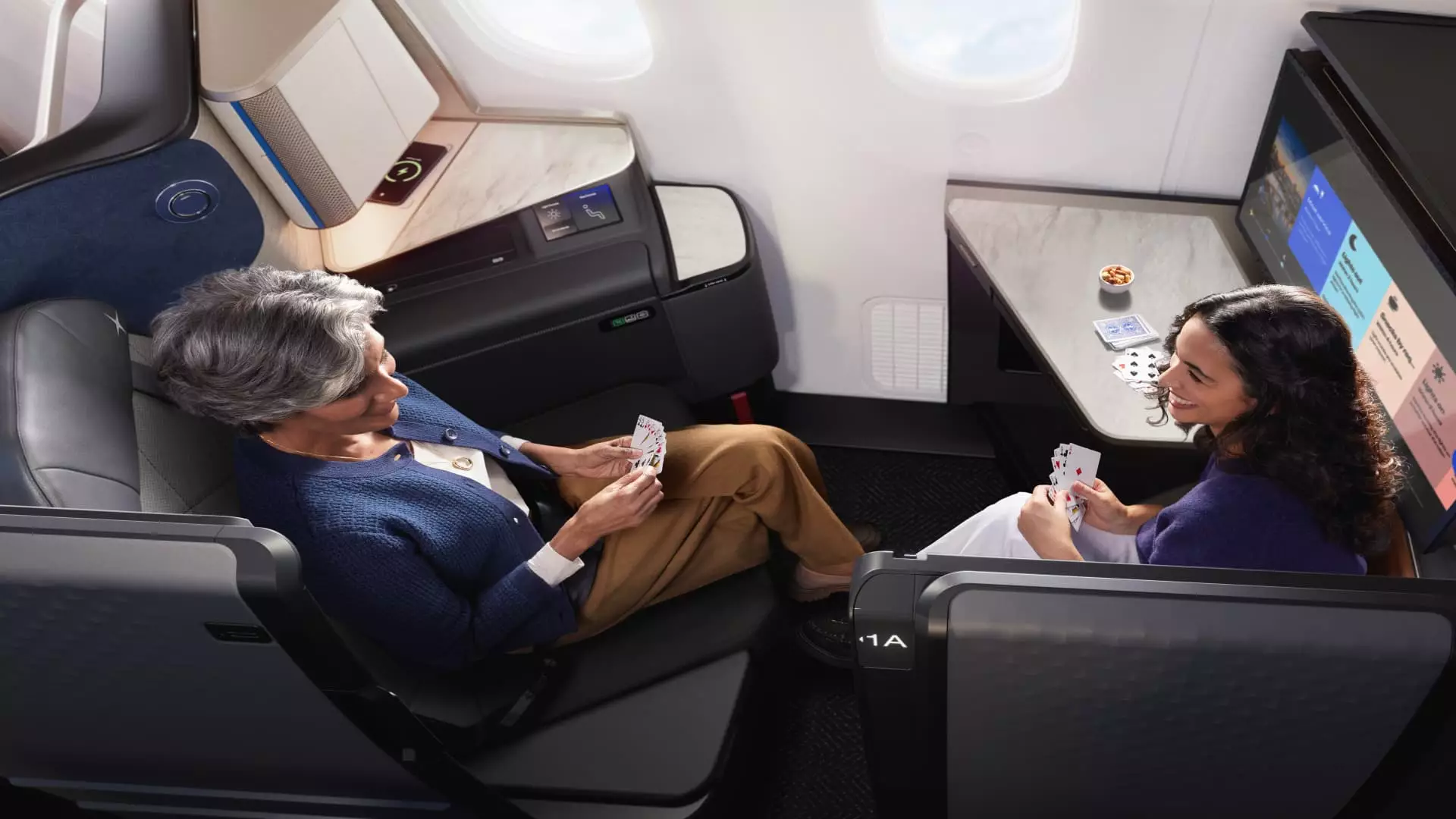In the ongoing rivalry among U.S. airlines, the focus on business-class upgrades illustrates a troubling trend—where indulgence becomes akin to ostentation. As American Airlines unrolls its latest business-class “suites” equipped with sliding doors and dedicated trinket trays, one can’t help but question the real value behind these extravagant features. Are airlines leaning too much on luxury as a sales pitch, rather than enhancing the actual travel experience? With prices easily climbing to over $5,000 for a one-way ticket, the separation from standard economy isn’t just psychological; it pinches wallets in discomforting ways.
For instance, why should travelers pay such a premium for a few extra inches of “living area” or the privilege of a wireless charging pad? The economic disparities in our society are troubling enough without airlines throwing lavish perks into the mix. It seems as if the airlines are betting that consumers will trade their hard-earned cash for a few amenities, while the core issues of air travel—comfort, efficiency, and timeliness—remain unresolved. This fixation on upscale features begs the question: Is luxury air travel becoming a gilded cage?
The Elimination of First Class: An Insult in Disguise?
With American Airlines preparing to phase out its first-class seats and instead offering what they deem super-premium business-class options, there’s a deeper problem at play. Airlines appear to have confused the essence of service with superficial attractions. Moving away from traditional first-class might create an illusion of progress, but it also distorts the value proposition. Business travelers may find themselves in a seat that is as nice as a historical first-class option, but without the prestige that traditionally came with being in the front of the cabin.
Such moves can seem like an affront to discerning travelers, who view first-class comfort as a symbol of professional success. Airlines may argue that business class has simplified their offerings, but for many, it feels like a dismissal of longstanding expectations and standards. Framing this change as a modernization while stripping away a quintessential experience is disingenuous at best.
Hidden Costs: What You’re Not Paying for
When analyzing the investment into business-class extravagance, it’s essential to examine the hidden costs accompanying these upgrades. On one hand, airlines promote more lavish experiences through better food, luxurious bedding, and cutting-edge entertainment options. However, these improvements often come with additional fees that aren’t always disclosed upfront. For instance, the price tags associated with certain meal choices or the ability to take your luxurious Bang & Olufsen headphones home can add significant extra costs to the journey.
Take, for example, how tickets for a desirable seat often come at the cost of economy passengers. The money siphoned into these high-end upgrades nudges prices higher across the board. While premium travelers bask in newfound luxuries, budget-conscious passengers feel the pinch, as their limited options persist without improvement. It’s a financial balancing act that raises questions about equality in travel.
Business Class: The Allure of the “Soft Product”
With airlines now emphasizing their “soft products”—amenities such as plush bedding and noise-canceling headphones—it’s clear that the focus has shifted. However, we must ask ourselves: Is this the kind of innovative evolution we expect from the airline industry? Many of these offerings, while pleasant, mask structural inefficiencies and often remain mere distractions from the experience itself. The fundamental discomforts that accompany air travel—late departures, lost luggage, cramped cabins—remain unaddressed while airlines boast about elevated meal options or enhanced ambiance.
The crux of the issue is predicated on the belief that a well-padded seat or a gourmet meal can obscure the broader issues of air travel. If air travel’s basic challenges—timing, safety, and reliability—aren’t prioritized, then does it truly matter if your seat has an ottoman or a 4K screen?
Pushing the Envelope or Just Pushing Buttons?
Finally, we can’t ignore the commentaries made by industry executives touting the resilience of premium travel demand. They attribute this rise to economic fortitude among wealthier travelers who can and will splurge. Yet, in the broader economic landscape, such assurances seem misplaced. The prospect of a recession looms, and corporate travel budgets are tightening. To push the narrative of luxury during uncertain times feels tone-deaf and out of touch.
While American Airlines and United Airlines set their sights on premium upgrades, they overlook the intention and perception behind them. Luxury should be an enhancement, not a band-aid. Whether airlines like it or not, the future of flying appears to demand more than just frills; it necessitates a reevaluation of the entire air travel experience. Are we simply accommodating indulgences, or are we creating a new standard for what air travel should be? The time for clarity may be at hand.

